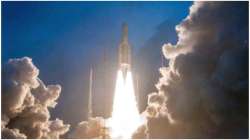India to send twin satellites DISHA to study upper atmosphere
The DISHA satellites will study space weather, solar-terrestrial interactions and provide an advance warning on space based weather happenings and preventive actions can be taken.

Indian space agency will build an identical pair of satellites for studying the earth's upper atmosphere, said officials.
The twin satellites named DISHA (Disturbed and quiet time Ionosphere-thermosphere System at High Altitudes) will be launched in the low earth orbit - about 500 km above earth - to study the physics and chemistry of the upper atmosphere, said Shantanu Bhatawdekar, Scientific Secretary, Indian Space Research Organisation (ISRO).
He was speaking at the online National Meet on Aeronomy Research on the theme "Science of near Earth Space and its Applications." Bhatawdekar said the upper atmosphere is the first region to experience the wrath of the Sun before it percolates further down. He said the DISHA satellites will study space weather, solar-terrestrial interactions and provide an advance warning on space based weather happenings and preventive actions can be taken.
The two satellites will carry identical payloads while one will be placed at higher inclination DISHA - H and the other DISHA - L at a lower inclination to the equator, Bhatawdekar said. The data generated by the proposed ISRO's solar mission Aditya 1 and by DISHA satellites would help to understand the Sun-Earth linkages.
Referring to the ISRO sending sounding rockets, S. Somanath, Secretary, Department of Space and Chairman ISRO said the observation capacity of those rockets were low as against the dedicated satellites sent up for the purpose. Somanath also urged the space scientists to look at the ways in which the scientific studies benefit the population at large.However, officials did not mention any time frame for sending up the two DISHA satellites.
ALSO READ | NASA records biggest ever 'Monster quake' on Mars, estimated to be magnitude 5
ALSO READ | NASA releases new images comparing sharper view of Universe using MIRI vs Spitzer telescopes